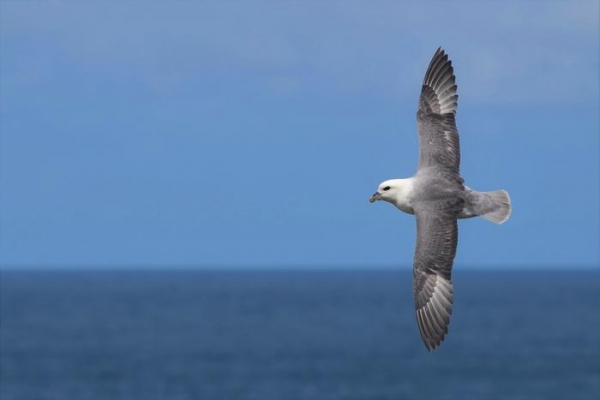The extensive study assessed the movements of 7,137 individual birds from 77 species of petrel, a group of wide-ranging migratory seabirds including the Northern Fulmar and European Storm-petrel, and the Critically Endangered Newell’s Shearwater.
This is the first time that tracking data for so many seabird species has been combined and overlaid onto global maps of plastic distribution in the oceans.
The results show that plastic pollution threatens marine life on a scale that transcends national boundaries: a quarter of all plastic exposure risk occurs in the high seas. This is largely linked to gyres - large systems of rotating ocean currents - where vast accumulations of plastics form, fed by waste entering the sea from boats, and from many different countries.
Read More: University of Cambridge
Northern Fulmar in flight (Photo Credit: Beth Clark)


